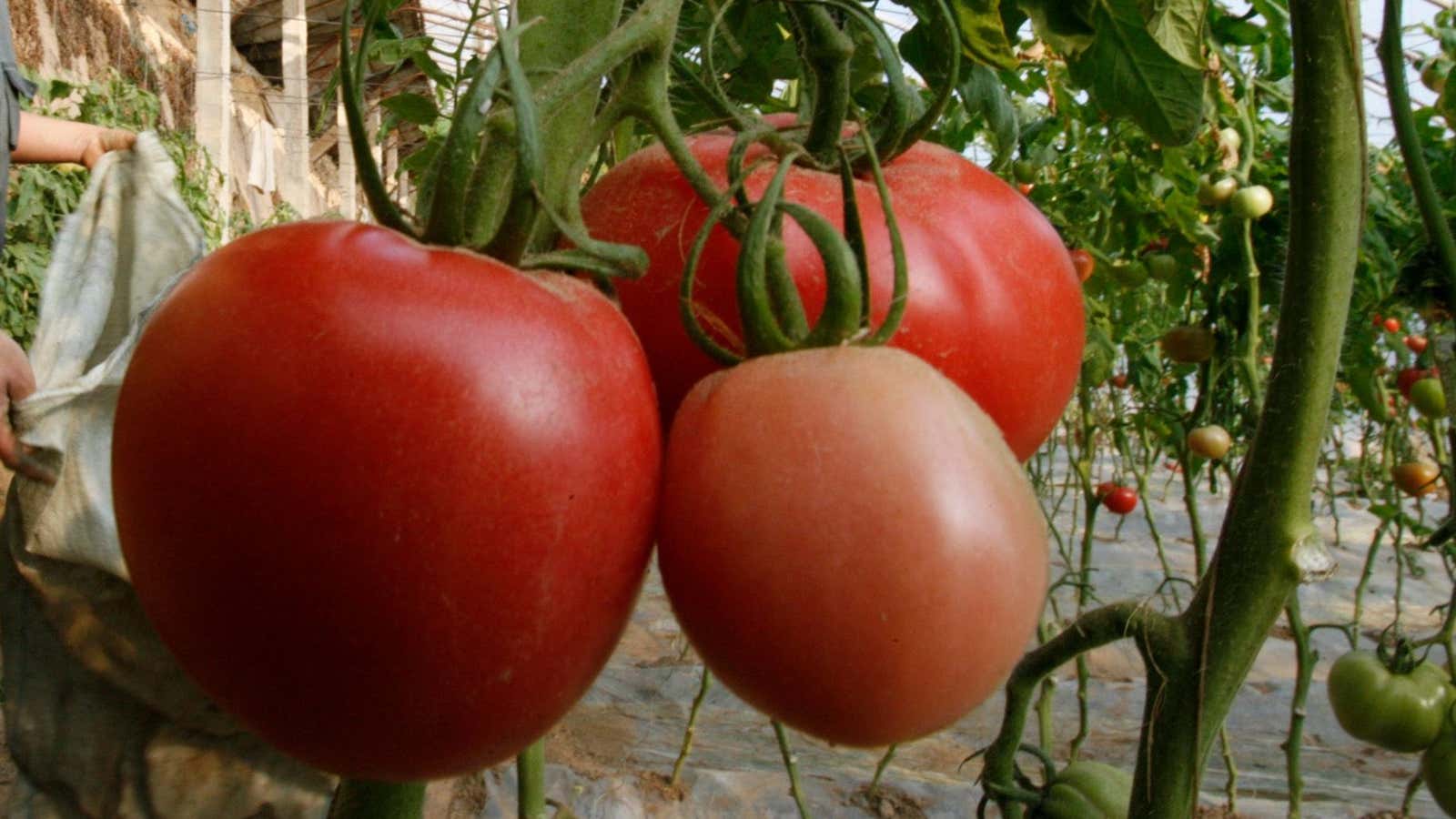As we near the solstice and half the planet sails into summer, farmer’s markets are starting to fill with fresh greens, peas, and berries. It’s tempting, when beautiful produce is plentiful, to buy too much of it—only to have ruby red radishes soften and turn to slime in the back of the refrigerator. That’s not just a bummer, it’s actively bad for the planet.
Food waste has become a huge concern in sustainability circles, and the National Resource Defense Council estimates that nearly 40% of the food produced in the US goes uneaten. The single biggest source of food waste comes from private homes, says Dana Gunders, author of Waste-Free Kitchen Handbook, so it’s an area in which cooks and eaters can personally make a big difference
There are several cookbooks dedicated to using the food we buy and grow more wisely coming out in the next few months, notably Now & Again, a guide to the creative repurposing of leftovers by food world luminary Julia Turshen, out in September, and Cooking with Scraps by Lindsay-Jean Hard, a collection of recipes and strategies to use peels, rinds, and stems instead of throwing them away, out in October. For now, you can make sure that all that summer bounty doesn’t go to waste in your own refrigerator.
Plan for the week
It sounds deceptively simple, but when you show up at the store, or farmstand, or farmer’s market without a plan, you’re setting yourself up for failure. “We tend to live out our aspirations in the grocery store, or particularly the farmer’s market,” Gunders said in a phone call. “We’re going to eat healthy that week, we’re going to try something new, we’re going to cook more.”
She says that taking a step back to be realistic about what you’re actually going to eat and when you’re going to use the produce you’re buying is key. Menu planning takes some of the anxiety out of dinner on a daily basis, and can also curb waste. “If you can look in your basket and peg what you’re buying to an actual meal, you’re way ahead,” says Gunders.
Be careful with new items
You’re much more likely to waste food that isn’t already on regular rotation in your diet. “The things I use all the time, I almost never waste,” said Gunders. If you’re curious about an ingredient make it a point to find an actual recipe to try it in, and limit yourself to one experiment a week.
Use your fridge properly
The crisper drawers are meant to stay at a higher humidity than the rest of your fridge, keeping greens fresher, longer. Here’s how to put your produce away like a pro. Don’t wash anything until you’re about to start cooking. Remove the tops from carrots, beets (these are delicious and can be used in salads, soups, and as a side), and radishes. Establish two different crispers: one for things that wilt—greens, herbs, carrots, peas—that is set on the highest setting, if adjustable; the other for things that will rot—fruit, and firm veggies like zucchini and peppers—set on low, or left cracked for slightly less humidity. Store berries in a single layer on a tray, if at all possible—it extends their life considerably.
Buy stuff someone else might not
Shopping with a plan and properly storing your vegetables helps reduce the amount of waste generated in the home. In the field, you can lend farmers a hand by being willing to purchase delicious, but cosmetically imperfect produce. “Be a little less picky about what your products should look like,” says Gunders. Ugly Fruit & Veg is an organization working to get folks eating beyond the realm of perfectly shaped strawberries and blemish-free tomatoes.
At the farmer’s market, don’t be afraid to take home fruit that still needs to ripen, to eat later in the week (don’t forget about it!). Or grab the absolute ripest, ready-to-burst tomatoes to use the minute you get home. Shuffle your meal plan to fit the readiness of your produce.”It’s a really challenging proposition to grow product that looks perfect and get it all the way to you just in time for it to be the right ripeness,” Gunders said. “Any flexibility you have on any of those things is going to help our farmers sell more of what’s coming off their farms.”
Food waste is a big deal
Rotting food fills landfills and emits polluting gasses and wastes all the resources that were required to get it to your home in the first place, like water, fossil fuels, and fertilizer. Consumers waste more food than grocery stores or restaurants, but changing behavior is ultimately easiest at the individual level. “No matter how organically or sustainably the food was grown,” Gunders said, “if you’re not eating it, it was all for naught.”
